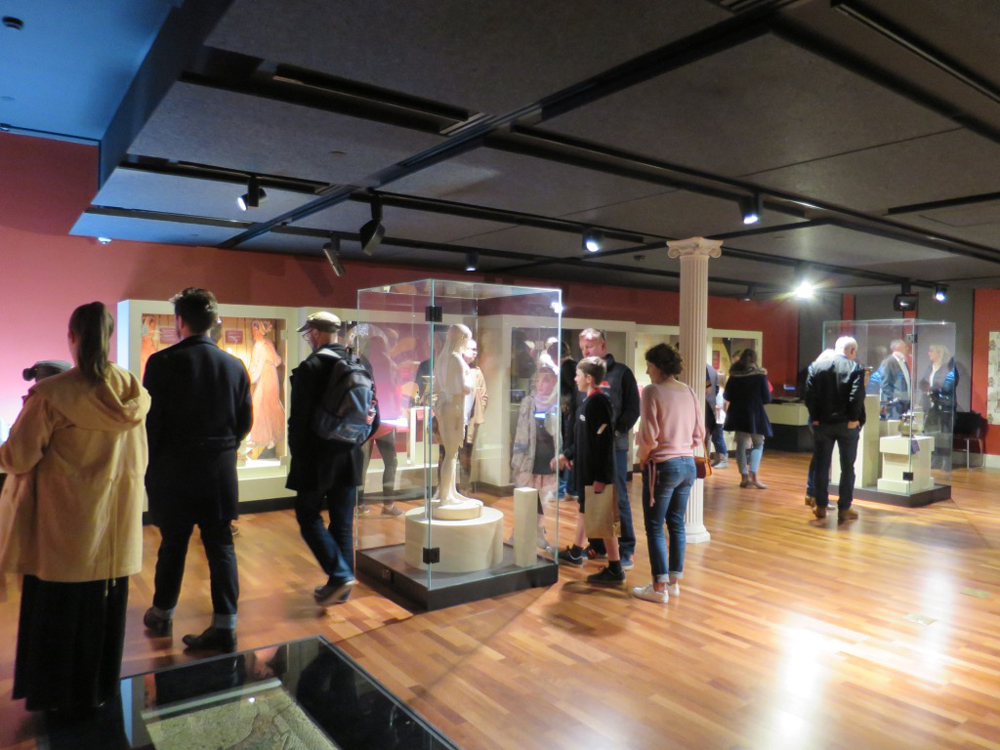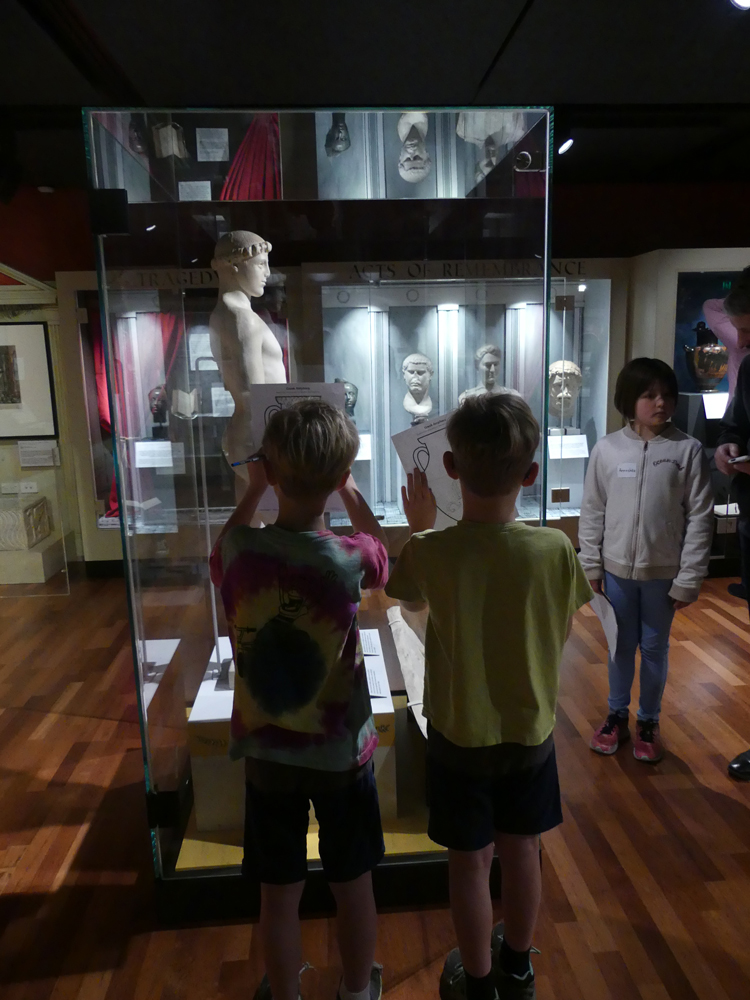It is a joy to be able to open the doors of the Teece Museum again, having been closed in response to the Covid19 pandemic. While we move carefully ahead, it is an interesting time to reflect on the things that we missed sharing during lockdown, and consider what that tells us about our sense of community. At the Teece, we have most definitely missed being able to welcome in visitors from near and far. With this in mind, UC postgraduate Natalie Looyer shares some of her interactions with visitors as a Teece Museum gallery host, and reflects on what value a collection of classical antiquities might have for our community.
I began working as a gallery host when the Teece Museum first opened its doors in May 2017. I remember the sense of excitement that the James Logie Memorial Collection would be open to the public for the first time since the 2010-2011 Christchurch Earthquakes. But I also recall the apprehension of those working hard to make this happen. Would it all work out? Would the public respond positively to a museum dedicated to classical antiquities? Would we get enough visitors?

Almost three years on I still remember the delighted reactions from visitors who came to the opening weekend of the first exhibition, “We Could Be Heroes: The Gods and Heroes of the ancient Greeks and Romans”. As the Christchurch Arts Centre was only just beginning to regenerate post-earthquake, many visitors were thrilled to be back inside its iconic buildings. A number of visitors informed me that they had studied on site when the Arts Centre was still the home of the University of Canterbury. Other visitors shared their own earthquake stories with me, while some listed the great things that were now happening in post-quake Christchurch – the Teece Museum included.
One visitor approached me on the first day and began sharing her memories of travelling to Sicily and the Middle East where she had seen similar antiquities in museums. Another visitor said to me, “I don’t need to look closely at the items. Just being in here makes me feel like I’m in Ancient Greece!” Another visitor, upon seeing the Xena Warrior Princess costume on loan from the Museum of New Zealand Te Papa Tongarewa, yelped and informed me that she had seen every single episode of the 1990s television series. She then rushed outside to phone her sister about the exhibition. “You have to see it,” I overheard her say.
I was overwhelmed with pride at the collective public response to the museum. University figureheads whose titles we tended to utter with trepidation – the Vice-Chancellor, the Pro-Vice-Chancellor, the Deputy Pro-Vice-Chancellor – visited with their children and parents, all in their relaxed weekend wear and looking suitably pleased with the new museum. Children found much intrigue in the gallery, not least with the two mosaics that are embedded into the museum floor. I remember one boy pretending to pat the dog mosaic. Another child crawled around on top of the river scene mosaic, exclaiming to their mother, “Look, I’m swimming!” A moment later, “Ouch! The fish bit me!”

Some visitors returned more than once over the months to follow. One gentleman got talking to me about his past travels to Greece when he was younger. He returned a few weeks later, donning a souvenir t-shirt and cap that he had purchased in Athens, to share with me some Greek travel guides that he had dug out of his bookcase. I remember another visitor whom I spotted studying a bust of the Roman emperor Augustus, an item also on loan from Te Papa Tongarewa. The man pointed out that he and Augustus had similar shaped noses, to which I suggested that maybe he had some Italian blood in him. A couple of weeks later the man returned and excitedly informed me that he had done some digging and had indeed discovered some Italian ancestry. “Not that I’m necessarily related to this bloke, but you never know,” he said, throwing a thumb in Augustus’ direction. Still, I recognised his hopeful gaze resting upon the stately bust in front of him.
We may not be able to trace our lineage to ancient heroes, but we often feel a remarkable sense of connection to many aspects of the ancient world. The narratives that are presented alongside the items in the Teece Museum prompt us and our visitors to reconsider our own ideas of heroism, religion, life, leisure and loss. Such an opportunity to think a little deeper about what connects us as people seems particularly important in a city like Christchurch, which continues to grow from the challenges that its people have faced in recent years. Thinking about the many and varied interactions that I have enjoyed with our visitors, it heartens me to know that our museum can offer those visiting a chance to experience a shared sense of humanity with those living thousands of years before us.

As a casual gallery host I still get to witness the enjoyment that visitors experience in the museum from time to time. Just recently I watched as a parent shuffled her child out of the museum, assuring him that they would return another day when they had more time to view everything. I smiled when I overheard the boy’s earnest reply: “Can we come back on my birthday?”
Natalie Looyer has been involved with the Teece Museum as both a gallery host and a collection technician. During her time with the Museum she completed a Master of Arts with the University of Canterbury Classics Department, focusing on ancient Greek literature. Natalie is currently working as contract oral historian and researcher.